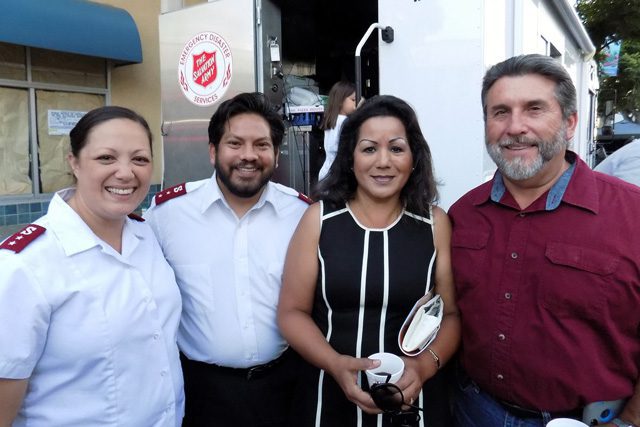Class will unpack issues of racial bias, biblical equality and cultural sensitivity.
By Jared McKiernan –
The Salvation Army College for Officer Training at Crestmont (CFOT) will roll out a fresh addition to its core curriculum this fall. A new course titled “Mission in Culture,” will be taught to all 19 second-year cadets as part of an effort to address key findings from a territory-wide cultural survey initiated two years ago.
The Project G 3:28 survey, a nod to Galatians 3:28, helped pinpoint some of the barriers that impact minority populations internally, particularly those that stifle the full use of talents in advancing The Salvation Army’s mission.
After the Territorial Cabinet and leadership of each command reviewed the survey findings and recommendations, they identified several new strategies to maximize attraction, recruitment, training and retention of minority populations within The Salvation Army. They determined a good starting point was CFOT, the USA Western Territory’s hub for education and spiritual development.
According to Territorial Commander Commissioner Kenneth G. Hodder, reaching people from different nations, cultures, languages and ethnicities is a skill The Salvation Army must constantly refine.
“That’s the thinking behind this new course,” he said. “We’re reminding the officers of tomorrow of the scriptural principle, ‘You are all one in Jesus Christ’ They, in turn, will be ready to teach others, and the Army will then reach new audiences with the message of Christ.”
Dr. Ken Davis, the chief architect of Project G 3:28, noted that, as an outcome of the survey, the course is a significant step in the right direction for at least two reasons.
“The course communicates The Salvation Army’s will and capacity to be informed by those within its ranks and to intentionally address its shortcomings concerning the problems of its internal ethnic and cultural challenges and divides,” he said. “Second, during this era in our nation’s history, where the socio-political environment is punctuating these divides, the Army’s mission and ministry can take on a new dimension as it becomes increasingly active in a new surge of civil rights. It can demonstrate to those to whom it ministers outside of its ‘ranks’ that it is serious about not only walking humbly, but showing mercy and being a voice for justice.”
“Mission in Culture” will be taught by Major Brian Jones and Major Stacy Cross, CFOT’s Director of Curriculum and Director of Campus Services, respectively, with guest lectures from Davis. At its core, the two-unit course is designed to provide a biblical and theological basis for intercultural ministry through regular discussion on related topics, reflection on various texts—including “Leading a Healthy Multi-Ethnic Church: Seven Common Challenges and How to Overcome Them” by Harry Li and Mark DeYmaz—and even a cultural fair.
For Jones, cross-cultural ministry is deeply personal. For one, he and his wife, Gwendolyn, formed one of the earlier interracial marriages for Salvation Army officers in the U.S. after the landmark civil rights case Loving v. Virginia, and such pairings were still largely shunned by the Church. That, along with appointments to places such as Hawaii, have stoked a desire in him to understand and minister to other cultures.
“If we are ministering without discrimination, as we say within the mission of The Salvation Army, then we have to educate everyone about what that means, and how you go about living that out in a corps setting or an institutional setting,” Jones said. “I’m really excited about this class. Hopefully it will sensitize the cadets to understanding what it means to be in another culture. And, the most important thing is to minister effectively as a Salvation Army officer within that culture.”
Moving forward, CFOT plans to offer “Mission in Culture” to second-year cadets each fall quarter. Davis added that he’s hopeful that the course will be followed by the further development and permanent placement of similar courses or symposia in the CFOT curriculum and that some of its components be included in “refresher” activities, such as Officers’ Councils, for those already in the field.
But ultimately, he’s encouraged by the move.
“Leadership asked; they heard; and they’ve responded with positive action,” he said.











